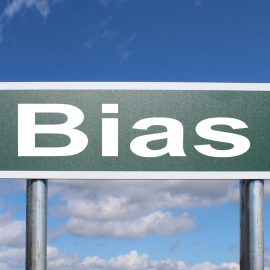

This article is an excerpt from the Shortform book guide to "The Art of Thinking Clearly" by Rolf Dobelli. Shortform has the world's best summaries and analyses of books you should be reading.
Like this article? Sign up for a free trial here .
What is the conjunction fallacy? Why do we tend to discount probability when choosing whether to believe something or not?
The conjunction fallacy is the human tendency to prefer a plausible story to a probable one. In other words, when a story makes sense to you, you’re likely to believe it even if the true probability of it occurring is low.
Keep reading to learn about the conjunction fallacy.
The Conjunction Fallacy
The conjunction fallacy is the tendency to judge the conjunction of events as more likely than its constituent conjuncts.
For example, consider a girl named Katrina who loves musicals. Now consider these statements:
- Katrina performs on stage.
- Katrina performs on stage in a musical.
Many people pick the second option as most likely because it makes a better story: Katrina loves musicals, so she’d perform in a musical. However, the first option is actually more likely in terms of probability because it’s broader: It has just one condition (Katrina being on stage) rather than two (Katrina being on stage and in a musical).
The conjunction fallacy occurs when you use fast thinking instead of slow, Dobelli says. While your logical brain is still calculating the probability of an event, your instinctive thought process makes connections to explain why the event might occur. The connections it finds often form a plausible story, so you accept the instinctive connection rather than waiting for the logical probability.
Overcoming the Conjunction Fallacy
While Dobelli presents the conjunction fallacy as something common, others argue that he exaggerates the danger of this fallacy. Dobelli based his understanding of the conjunction fallacy on the initial study that defined it. However, other studies were unable to replicate this initial study’s results—they found that the conjunction fallacy isn’t as common as the original researchers suggested. Only 45% of respondents succumbed to the fallacy, compared to 85% in the original study.
Discussing a situation with other people drastically reduces the likelihood of the conjunction fallacy taking root. Thus, it’s possible that overreliance on quick, instinctive cognition—which Dobelli credits with causing the conjunction fallacy, as discussed above—can easily be overcome.

———End of Preview———
Like what you just read? Read the rest of the world's best book summary and analysis of Rolf Dobelli's "The Art of Thinking Clearly" at Shortform .
Here's what you'll find in our full The Art of Thinking Clearly summary :
- A detailed look at the most common logical fallacies that inhibit decision-making
- How to recognize and overcome these fallacies to make better decisions
- Why you value things for arbitrary reasons






